Flight, movement…The freedom associated with flight has always occupied the imagination of human beings who have been trying to find ways of capturing the movement through different art forms. The problem of expressing movement has been particularly important in static arts such as fine arts and architecture. Artists, sculptors and architects have been toiling on devising technical methods that would convey the sense of movement to otherwise static forms and structures.
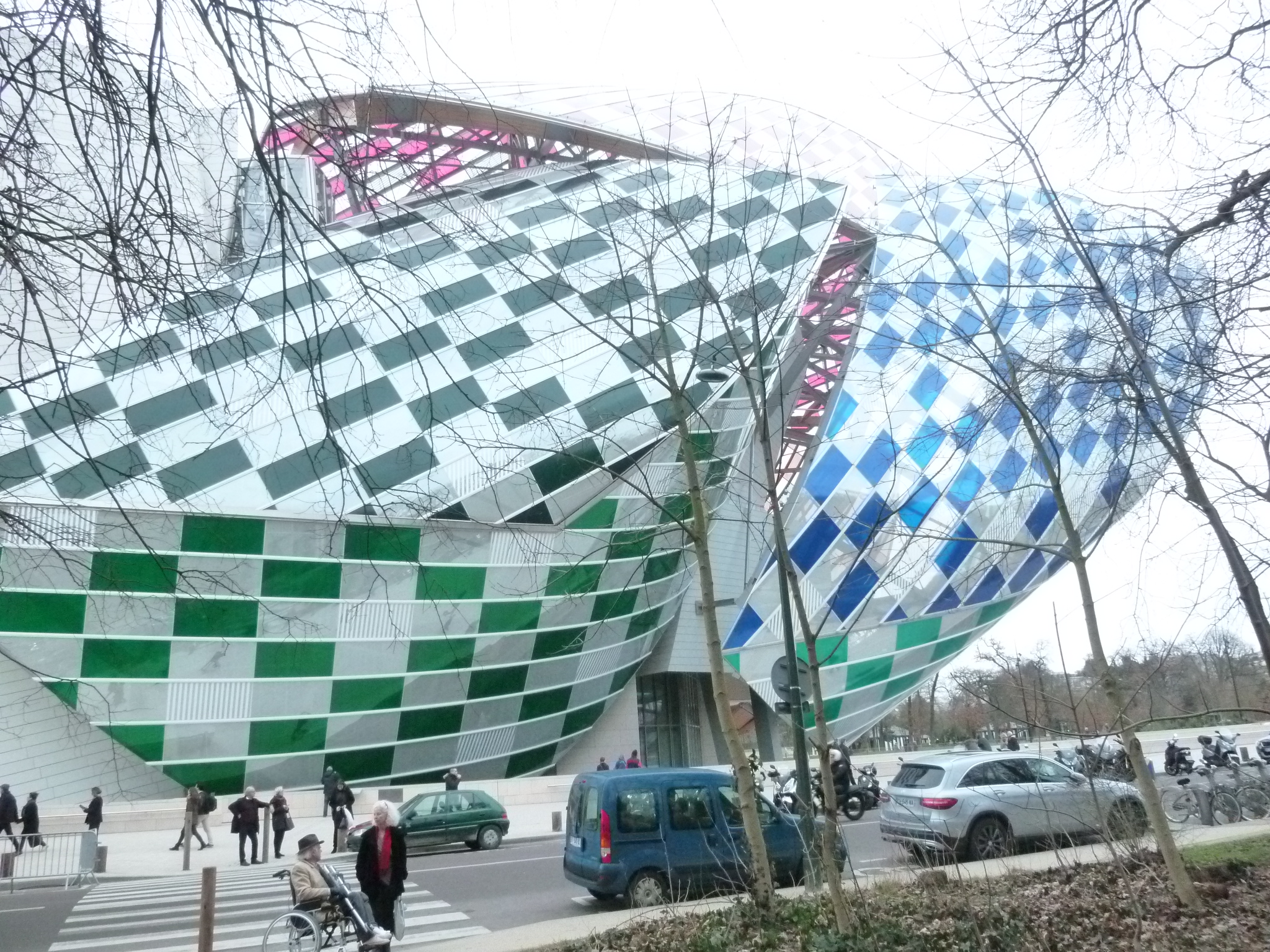
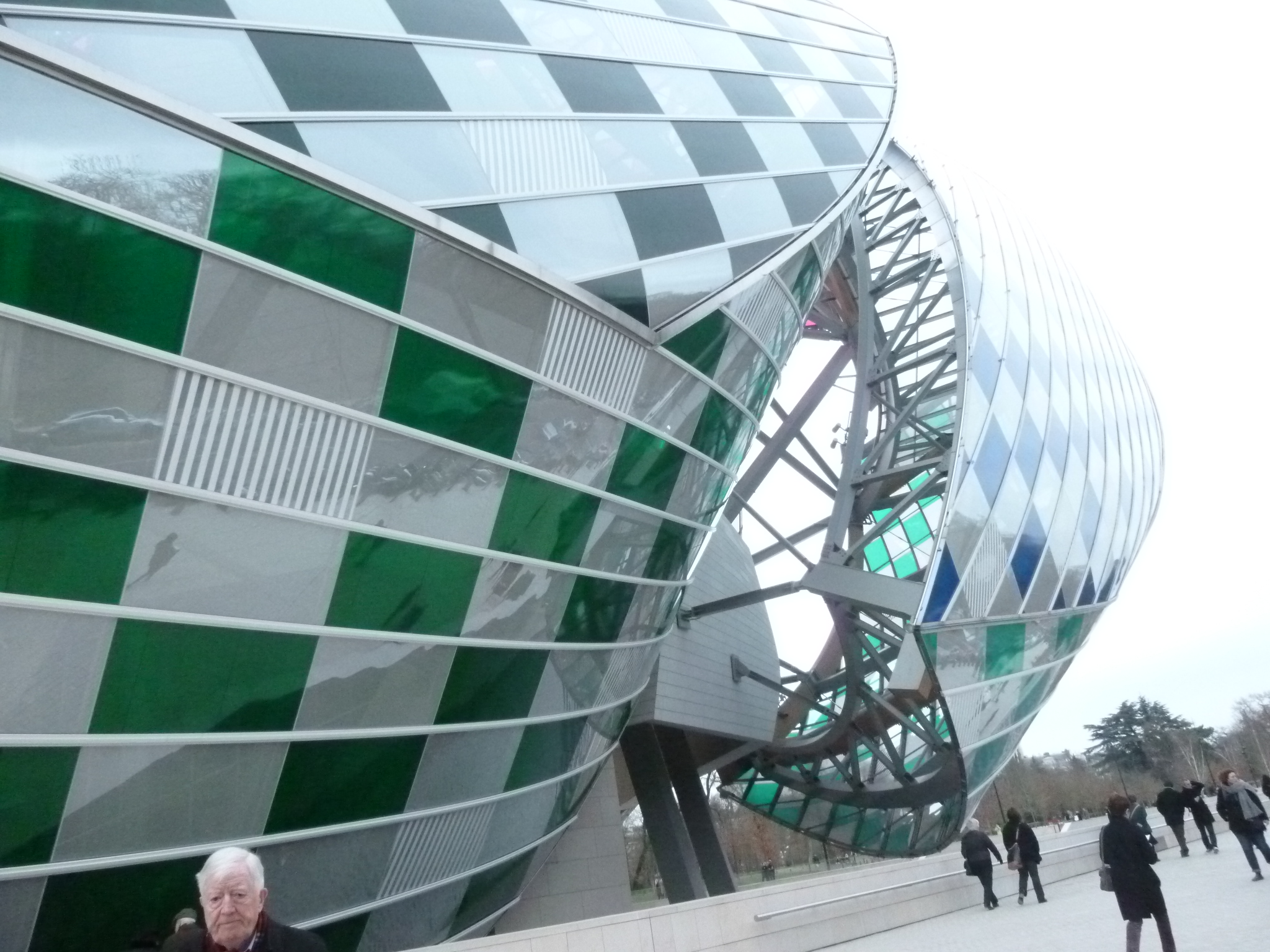
Architecture has been one of the most static arts until the advent of expressionism in modernism in the mid-twentieth century, the idea of which was to create impressive, non-ordinary and dynamic forms. As from then all sorts of complex geometric surfaces, curved organic forms and cantilevers have been used to accomplish the task. Dealing with a very pragmatic and technical-technological art, that architecture is, architects have always tried to insert a bit of poetry, an ounce of emotion in otherwise blank system of wall and ceiling structures. Until mid 20th century this has been done mostly by animating the boring facades of ‘box-structured’ buildings by means of ornaments, fenestration, texture, color and other decorative or structural elements applied to the façade. Technological development of the 20th-21st centuries brought great emancipation to architectural form and design thinking of architects who started pondering over devising means to break out of the architectural box-system. Deconstructivist architecture was one of those tendencies that came to question the hegemony of the box-structure in architecture trying to liberate it from the structural and ideological cage in which it had been imprisoned for centuries. The purpose of deconstructivist architects was to bring in a sort of poetry into architecture that would be inherent to the structure of the building, instead of seeking it beyond its tectonics.
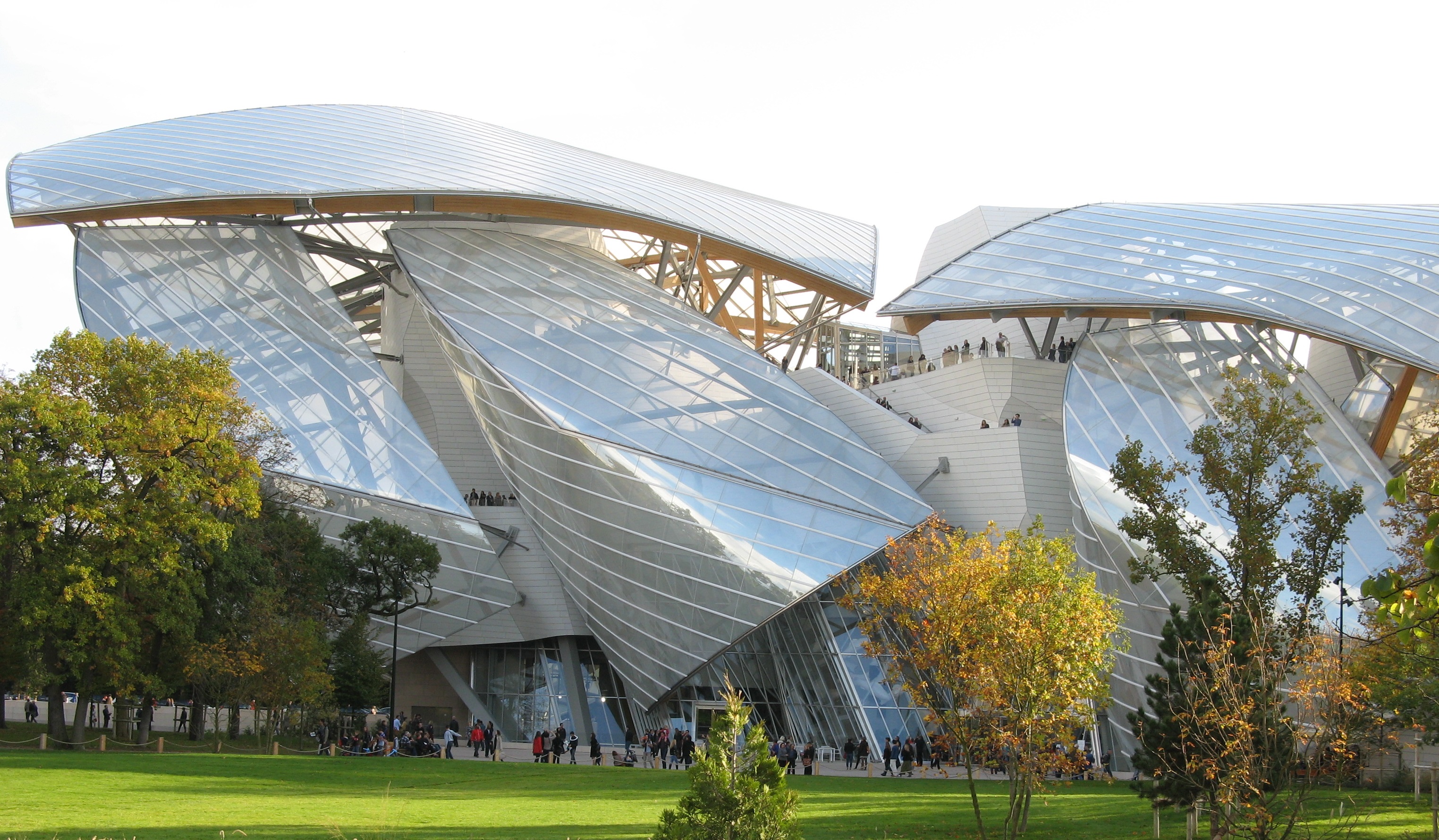
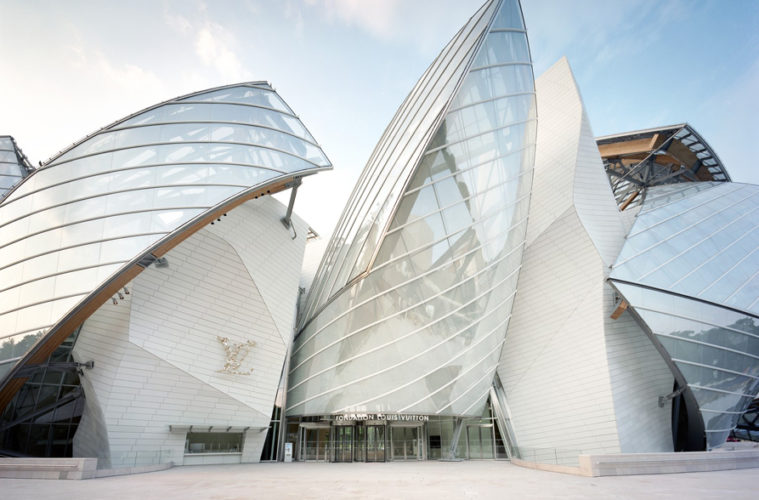
Franck Gehry’s Fondation Louis Vuitton is a poetry incarnated. Sails full of wind, FLV looks like a ship that is trying to take off. The building is literally covered with glass sails hold by a system of wooden and metal structures that altogether reproduce the image of a sailboat with the masts and all the rigging. Being a combination of detached, curved volumes the building is a pure sculpture that reveals very different aspects from different points of view. Whilst from certain angles it does look indeed like a boat that tears the waves apart with its proudly protruding bow, from other angles it reveals itself to be a heap of iceberg-looking forms caught in the moment of fall. This marine metaphor is underpinned by the ample use of water surfaces which surround the building making the metaphors of boat and iceberg even more evident and direct.
This kind of ‘talking metaphors’ have appeared in architecture relatively recently. Architecture has always been considered as an art of rationality that tectonically marries the form, function and beauty. The only result of this formula for centuries has been the ‘box’ architecture, a system of vertical walls and horizontal slabs of floors and ceiling. This structure per se does not comply well with the requirement of beauty because of its simple geometric structure and a priori blank walls, yet it is very difficult to subvert the omnipresent, as in terms of rationality and perfect marriage of the form and function it was unbeatable. Architectural history has seen many concepts trying to subvert this hegemony, such as approaches preached by for example Hundertwasser or Gaudi who tried to emancipate architectural structure from its rigid box-structure by trying to give it more sculptural and individualist aspect. Yet Gehry goes further. He not only subverts, destroys and deconstructs the ‘box’. He puts under question the essence of architecture as a holistic and tectonic structure in general. In the quest of poetry and the geometry of his envisaged forms Gehry forgets or simply denies the validity of tectonic connection of form, function and beauty. And the FLV is a perfect prove of it. Here the marine metaphor and the building’s semblance with a boat is purely formal. Structurally speaking it has not only no relation to boat rigging, but actually to architecture in its traditional understanding as well. We look at the FLV and see‘poetry in stone’, a forest of cold and proud icebergs or a light and transparent boat that flies to the sky. But we don’t see the building. What we see is actually a pure sculpture, empty forms the purpose of which is to create a shape, whereas the structure and the function is hold by a pretty simple box-structured building that is hidden behind this shell of sails. If to stripe the building off this outer shell, we might face a pretty ordinary system of geometric Gehry-style volumes.
This bold manner of concealing a building behind a decorative shell that pretends to be a part of its architecture is an unprecedented act of either ignoring with all the logic and tectonics of architecture, or it is perhaps a suggestion of a new perception of architecture as something purely aesthetic and not necessarily coherently structural. If the intention of Gehry was creating a new concept of architecture which would not pretend to possess coherent tectonics, then perhaps it is architecturally-speaking legitimate to deploy empty, sculptural forms without risking them to be referred as to formalistic architecture. The building openly manifests its engineering and the construction of all the forms and details, which have been left exposed, which raises a question: is this tectonic discrepancy between the form and construction a deliberately designed concept or simply a result of impossibility to integrate the engineering and architecture into a holistic tectonic structure?
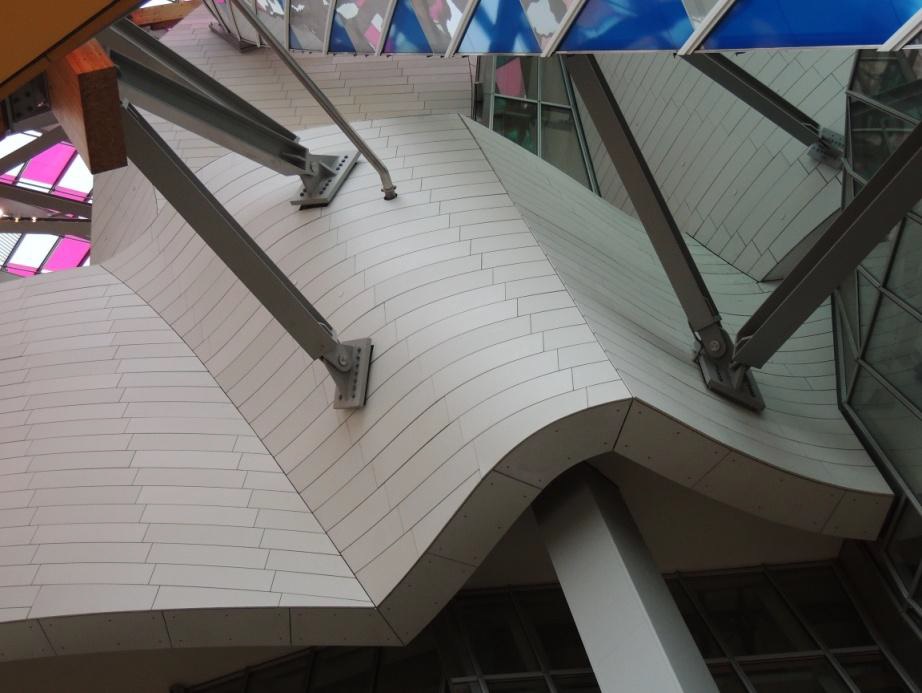
In other words the architecture of FLV is controversial in terms of non-tectonic relationship between the form and the construction. Whilst the forms of the ‘sales’ represent holistic sculptural structure, its exposed construction brings is visual noise in its formal integrity. The technical aspects of architecture, that is its constructions and engineering, cannot be poetic if the engineering itself hasn’t been made the ethos of the poetry (such as in case of high tech architecture, for example). Whatever they say, FLV is romantically and formally, not technically poetic structure. Its architectural meaning is based on the curvature and composition of its forms, not the mightiness of its constructions. Because of its exposed engineering, constructional details such as girders and beams holding the romantically flying sales, the ‘mystery’ of the architecture has been killed and the poetry of architecture has been stripped off its lightness like in a poem where you can feel how much the poet has toiled to find the right rhyme and rhythm.
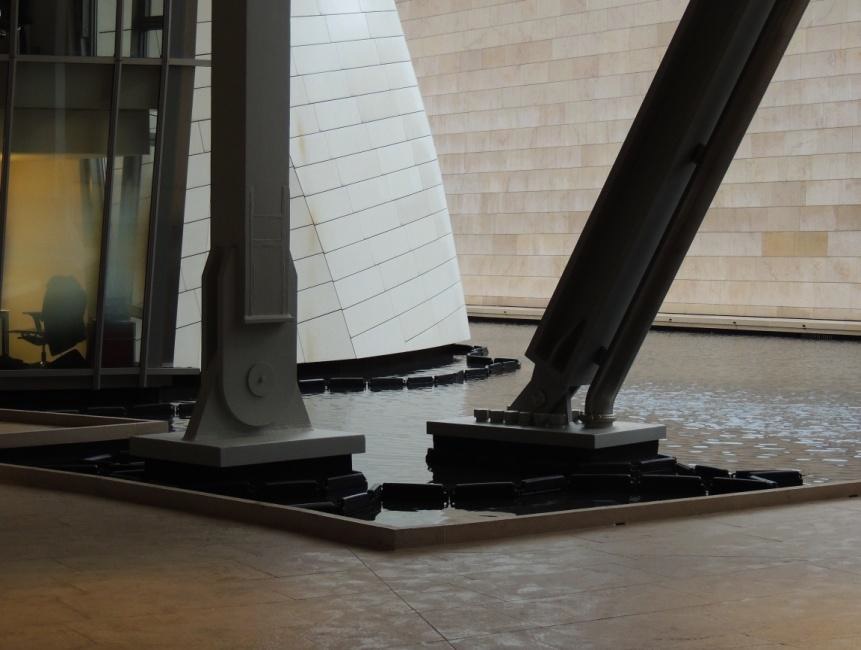
The building is certainly expressive and impressive. Its scale, dynamism of transparent glass forms and overall dramatic expressiveness of forms are truly touching. But this is not one of those buildings that, despite its complex structure, I can observe and ‘read’ for long. This is not a building that mesmerizes me neither from the within, nor from the outside. Despite its pretentions to be poetry incarnated, this building represents pretty banal, simplistic and even chaotic hip of incoherent structures: Its complexity, its composition and geometry of forms seems to be random, and for me there is no poetry in chaos. Randomness cannot be meditative and mesmerizing if there is no logic, no pattern or regularity behind its formula. That is why proportional interconnection between parts of a building has been so important for architects of all epochs, who were occupied by the task of beauty and harmony emanated by the coherence and proportionate interrelation of the parts of a building. A blank stone wall with a simple arch opening meticulously located on its surface can be emotionally much more touching and poetic than the whole verbose orchestra of randomly generated glass, metal and wood constructions that we witness here.
FLV is certainly a major engineering and constructional achievement. It is thanks to its engineering that actually a formal vision of the star-architect of the building has been made true. This building is the victory, the revanche of the architectural vision over engineering, imagination over rationality, emotional requirements over practicality. The engineering and structural rationality of the building have been sacrificed for the sake of form, as a result of which the constructions of the building have been exposed in a rather non-tectonic way. The girders in the interior protruding from here and there are not load-bearing but yet they are here for an uncertain purpose, perhaps simply because it was impossible to hide them or integrate more tectonically in the structure of the building. In the exterior as well the metal girders holding the beams and the sails structure brake through the wavy façade of the main building inside, as if a sprout that has to make its way out through the ground from wherever it has to. They don’t have any structural or compositional connection with the façade, which actually, seems simply to be an obstacle on their way out.
In this building there is no marriage between the structural logic of the constructions, engineering and function with the desired geometry of forms. What we see is rather a domination of an aesthetic concept. I would call this building an architectural installation, rather than architecture. This phenomenon is better known from the case of contemporary (e.g. conceptual or optical) arts that came to substitute figurative art, thus changing dramatically the overall notion of art per se, whilst the old term ‘art’ has been extended to anything not necessarily possessing artistic or technical efficiency, creating by such major confusion not only among the laymen but also among professionals. Similarly, witnessing the birth of such non-architectural, non-tectonic structures perhaps we should consider coining a new term describing it, as, however impressive FLV might not be, it doesn’t comply with the traditional and conventional definition of architecture as a mutually interconnected and tectonic system of all the three eternal ingredients of architecture: Form, function and beauty.